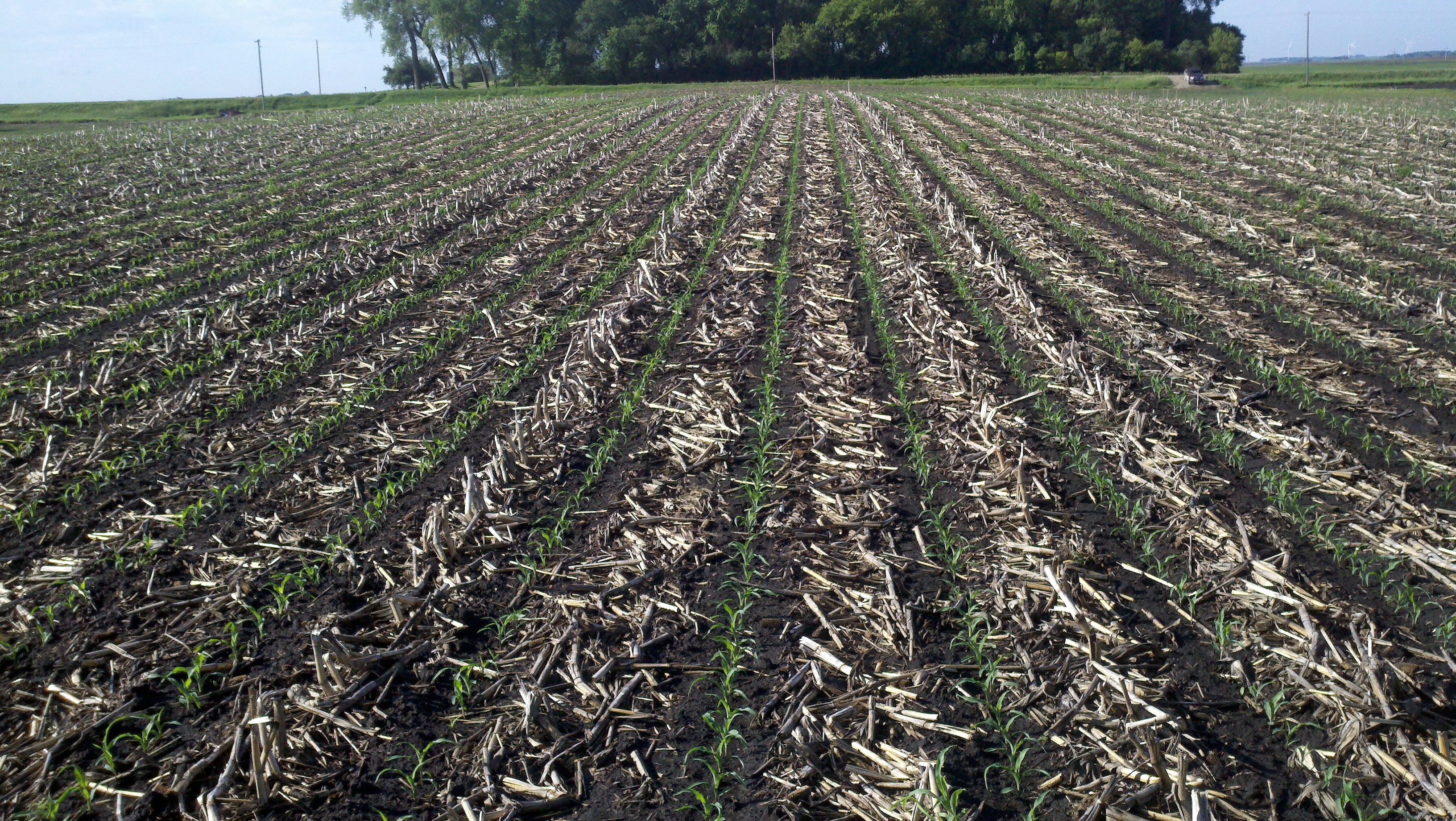It was August 2011, and I was growing restless with our cropping system. Actually, I was past restless and knew what I wanted to do.

For 4 or more years, I had researched strip-till as an alternative to the aggressive broadcast tillage we were doing at the time. I hated field cultivators for the smeared layer they left beneath the surface of that “fluffed” soil, and the virtual “pavement covered in baseballs” left in the wheel tracks of the monstrosity of a tractor that pulled it. I found disk-ripping every acre of corn stalks, whether they were going to soybeans or corn the following year, frustrating.
Why were we wasting the time and money to pull a 17-foot-wide implement with a 500 horsepower tractor to blacken up the field a bit?
Why was I hiring other people to apply my fertilizer in a “spread it to the wind” manner when I knew we were perfectly capable of the task?
All these things and more had brought me to a fever pitch and I was ready to take action.
So, as I drove to a friend’s field to provide custom fungicide/insecticide application services, I called Kevin Kuehn at ETS and told him I wanted to purchase a Soil Warrior. At the time, I think he was the only other one excited by this decision! My Dad offered to “buy me out” of the idea. My banker questioned the real cost savings I forecasted that would essentially pay for the machine over the long haul and was worried about the new debt I had taken on.
Fast forward to 2015.
We have had, arguably, the worst 3 back-to-back years of crop production weather in anyone’s memory. Commodity prices have dropped precipitously. If you would go back in time and tell me that August that this would be the future, I would have backed down from my purchase…and I would have been wrong.

My cost of production has gone down. Yields have stayed the same, and actually increased from our average in 2014. More of our money stays in our operation instead of paying others to apply nutrients for us. The adversarial growing conditions helped me develop a deeper respect for our soil and become more efficient with fertilizer, time, and fuel. The improvements and benefits are real. I am glad my crystal ball was broken that day!
My research into transitioning tillage methods taught me a few things that I want to share with anyone considering a shift to strip or zone tillage on their farms.
1. Invest in RTK GPS accuracy the year BEFORE making the jump. This will make it far easier to miss your corn stalk rows that first pass with your strip-till unit.
2. Don’t skimp on horsepower. Unless you have an excess amount of time to complete your fieldwork in the fall (and/or spring), take the per-row horsepower requirements seriously so you can pull your machine at a respectable speed.
3. Band your fertilizer and only till your strips. More and more I hear of “strip-tillers” who are either just banding fertilizer beneath the surface, then broad-area tilling over the top, or they are tilling strips, and broadcasting fertilizer. Strip-till is a system. All parts of it work together for the good. You will not be as successful if you cherry pick which parts you adopt.
4. Sell the other equipment. If you commit and use a machine proven to handle heavy residue, and proven to produce similar or better yields than conventional methods, you will not need your field cultivator, or ripper anymore, and possibly other tools. Use that capital to invest in the best machine and technology possible to give the system the best chance to work. SoilWarrior happens to meet all these descriptions!
5. Make some phone calls. The advice I received from another grower who was using a SoilWarrior was very valuable. Most guys are willing to share information about their experiences in making the change. Take advantage of this, the worst thing they can say is no!
6. Consider another nitrogen (N) source other than NH3. I have never used NH3, but it seems to me that it would complicate a fall pass to be applying N, phosphorus (P) and potassium (K) all at once, not to mention the “train” effect created when pulling the tank behind your machine. Spring N is less subject to loss, and does a better job at overcoming the “carbon penalty.” UAN and Urea are also friendlier to soil biology.
Ben Pederson is a 3rd generation producer from Lake Mills, Iowa. In addition to crop farming, he owns and operates Sprout Ag Enterprises, which is a Precision Planting and 360 Yield Center dealer. Just like other ETS customers, Ben enjoys sharing his experiences with strip-till in an effort to raise awareness about soil health and innovative ways farmers can defend the land.
You can learn more about his journey by reading "Tug of War" (Vital magazine 2014) and by watching this video.





